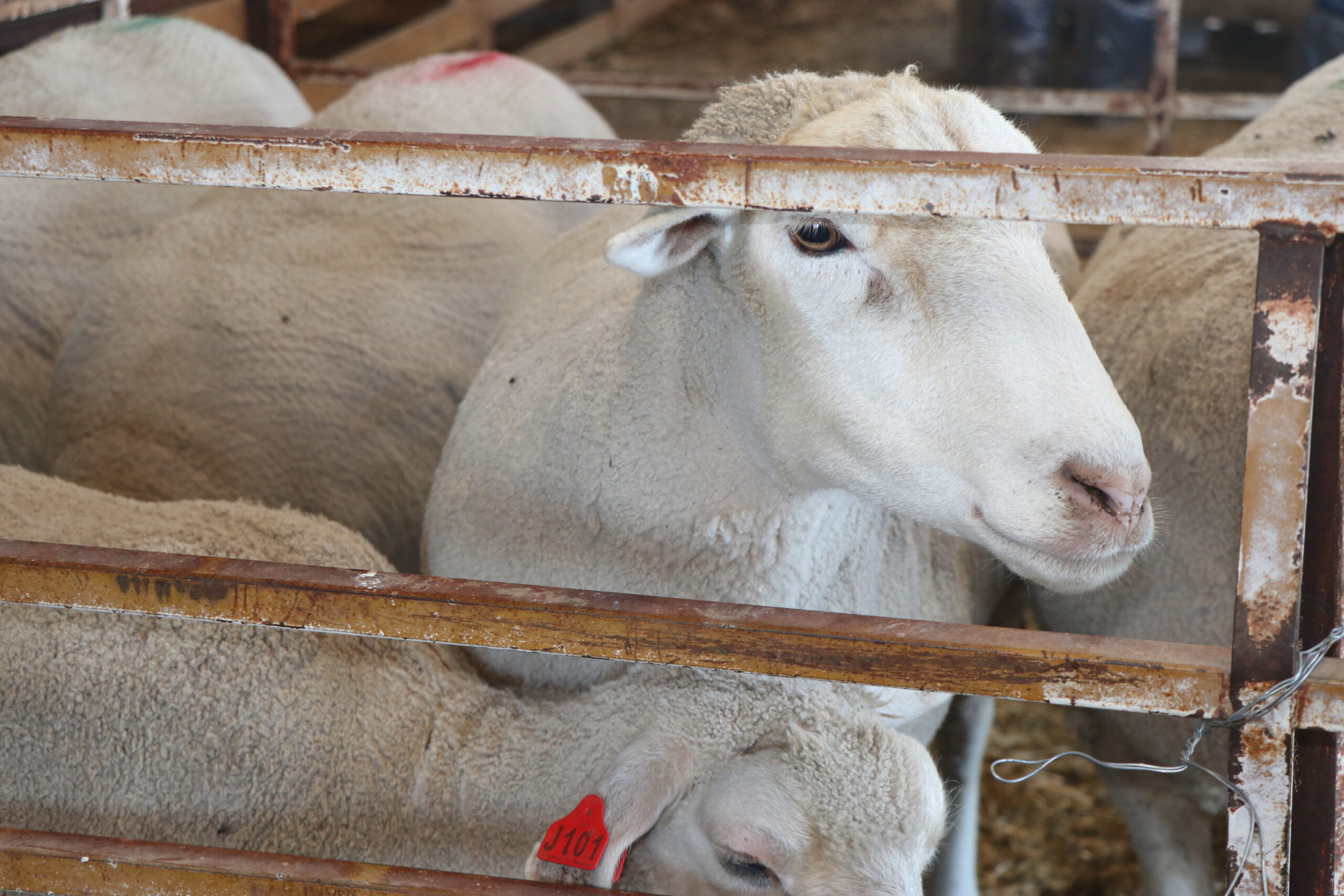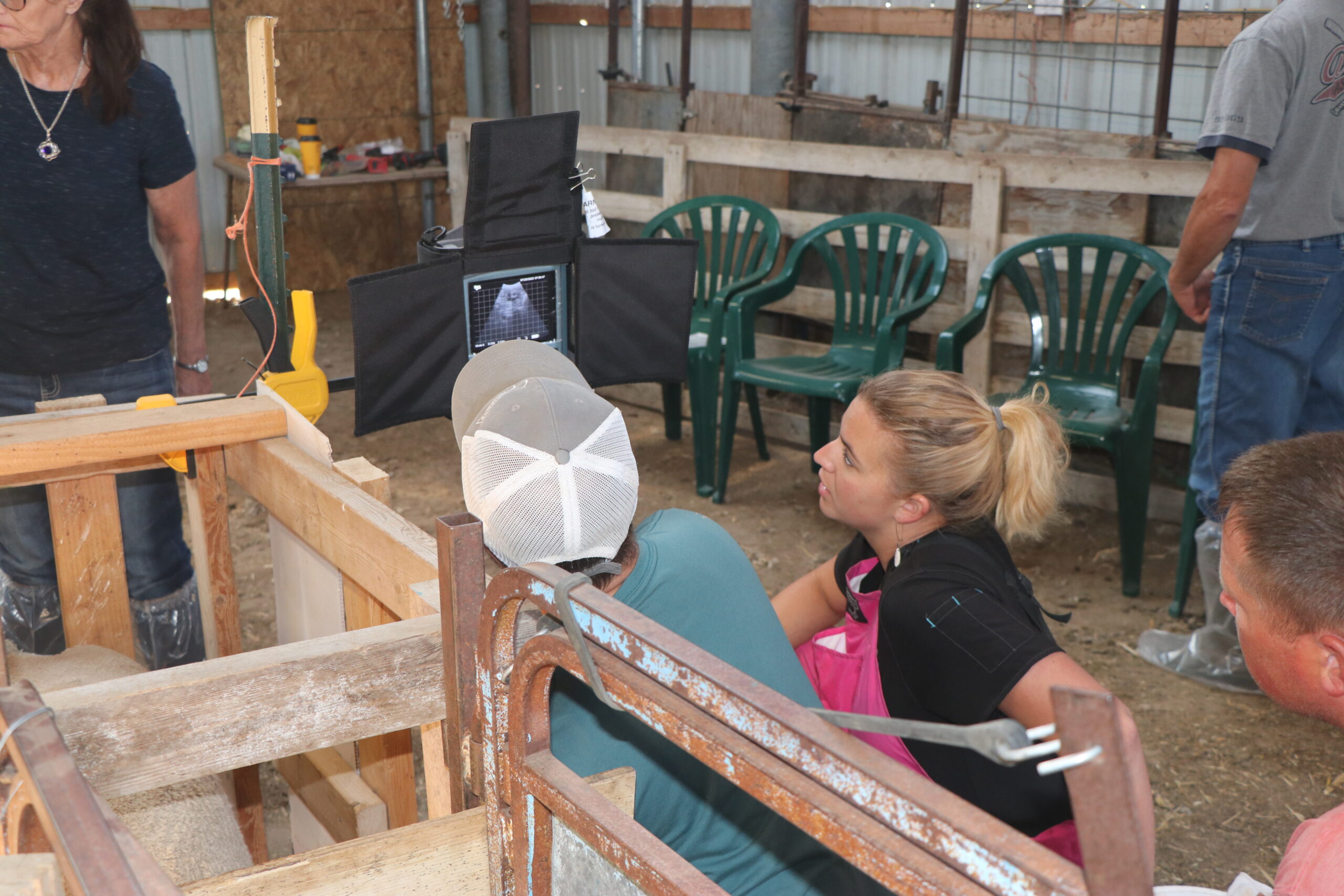There isn’t a “What to Expect, When You’re Expecting” book for sheep producers, but we have started to create our own book. On our farm, we practice an accelerated lambing program, which means we are lambing every eight months. Since we are lambing more frequently, it is important for us and the welfare of our flock to plan around how many ewes are pregnant and how many lambs each ewe will birth.

We find this information out by using ultrasound technology. By ultrasounding our flock, we can identify which ewes are pregnant, how far along they are in gestation, and the number of fetuses they are carrying. Finding out this information helps us to better manage our flock and prepare for lambing.
Once we have determined which ewes are pregnant, we can begin feeding them a diet that will help them maintain their well being while allowing them to have a healthy pregnancy. In western Nebraska, we have access to a variety of crops and crop byproducts, so depending on what time of year it is, the feed ration is altered to use the feedstuffs available.

We are also more prepared for lambing because we know an estimated date that the first lamb will be born. Knowing the date allows us to prepare our “lambing kit” and have our barn ready for all the babies. Our “lambing kit” has a variety of supplies in it, such as OB gloves, towels, bottles, syringes, vaccines, ear tags, and so much more. We create a checklist to make sure our kit is fully stocked, and all supplies are on hand.
When preparing the barn, we set up lambing jugs, which are small pens that the ewes will go into with their babies to bond for the first 24 to 48 hours. Once the pairs have bonded, we will move them to a “graduation pen,” which is a bigger pen in the barn where six to eight ewes and babies go before heading outside. We will also make sure we have our straw and hay bales stacked in the barn for easy accessibility when bedding and feeding the ewes.
As farmers, we understand the importance of taking care of the expecting mothers for the welfare and longevity of our sheep. This is why we use ultrasound technology.
For information about using ultrasound technology for animal welfare, watch this interview with Pure Nebraska.



